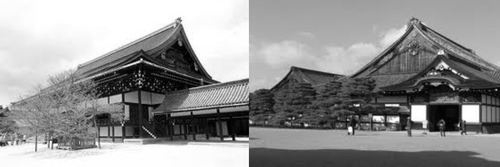Relationship with the People
The differences between the roles of an Emperor of Japan and a Shogun are also distinguished by how they interacted with the people of Japan. The Emperor, although was considered the official ruler, was spiritually separated from the people he ruled. He was a demi-god with his blood relation to the Heavens. Not only was he spiritually separated from his people, he was also physically removed from society. Residing in Kyoto Gosho, only a select few were allowed to enter the palace. The 18 steps to the Shishinden represent the 18 court ranks allowed into the Hall of State. To the people of Japan, although the Emperor was a religious leader, he was very removed from any other aspects of their lives. Only a few ever got to see the inside of the palace perhaps during a religious ceremony but even fewer got to see the Emperor.
The Shogun had a closer interaction with the people he ruled. He played a more direct role in the governing process. Compared to the Emperor who was physically and spiritually separated, the Shogun had no such separation because he was considered one of the mortals. Not only was he mortal, he was also a warrior who actively defended the country. The close involvement he had with the people is displayed in the Ninomaru Palace of the Nijo castle. In the palace, there are 5 connecting units. The castle was built for the Shogun to reside in during his stay in Kyoto. Two of the five units were built with the intention that others warriors and officials besides the Shogun were to enter them. In these units, there was even space for servants and lower class warriors to rest in unlike that Kyoto Gosho which only allowed 18 court ranks to ever enter.
